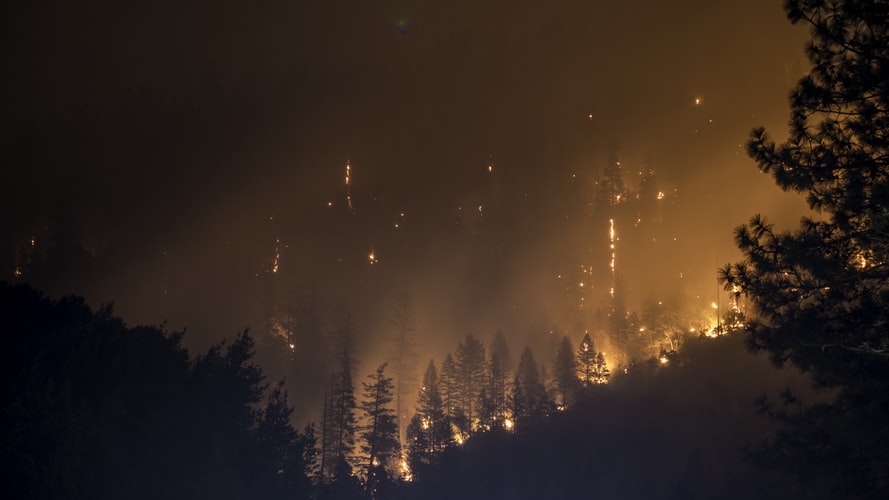Since much of the western United States has most of its moisture in the fall and winter, the vegetation dries out in the summer because of low rainfall and high temperatures. This has traditionally allowed for perfect wildfire conditions
The summer of 2020 has been no different. California and Oregon wildfires normally take place August through November. In 2020, California has had 7,718 fire incidents and 3,154,107 acres of land destroyed. Additionally, there have been 5,400 structures damaged and 25 deaths as a result of the wildfires in California as of Aug. 15. The first, third and fourth-largest fires in California’s history are all currently burning.
To help with California’s threatening wildfires, on Aug. 18 the governor of California, Gavin Newsome, declared a state of emergency. President Trump also issued a major disaster declaration to provide individual assistance and public assistance. As of Aug. 17, roughly 17,400 firefighters are also working long hours to help contain the 26 major fires in California. The state continues to experience gusty winds and low humidity which encourages more fires.
One of the major fires currently burning is the El Dorado Fire. The fire began in El Dorado Ranch Park in Yucaipa, San Bernardino County on Sept. 5. The fire started as the result of a gender reveal party when a smoke-generating pyrotechnic device was set off. The fire has burned 14,478 acres and has 44% containment as of Sept. 15.
The other major fires in California were started by lighting, like the Red and Salmon fires and the North Complex fires.
“I think that the wildfires in California are truly devastating,” says Northwood senior and member of Thirst Club Gretchen Davis. “Clean water is a scarce resource in many locations, and it is crazy to think of the billions of gallons of water being used to put out the California wildfires.”
Oregon has also been affected by numerous wildfires. So far, Oregon has experienced 30 fires that have burned nearly one million acres. The wildfires have caused 10 deaths and 500,000 people have been told to evacuate. As of Sept. 17, a few fires that firefighters are trying to contain are the Beachie Creek Fire, Lionshead Fire, Riverside Fire, Almeda Fire, Holiday Farm Fire, South Obenchain Fire and the Archie Creek Fire. All the fires burning in Oregon have low containment percentages and hundreds of acres burned. Low containment percentage indicates how much of the fire has been cut off by a control line.
Wildfires do not only cause destruction and fatalities; they also contribute to climate change and worsening air quality. This is because wildfires release large amounts of different types of carbon. When carbon dioxide, brown carbon and ozone precursors are released into the atmosphere, they lead to a change in climate locally and even globally. Brown carbon is referring to the smoke released by the burning of organic matter. The western part of the country’s climate has changed to allow for even hotter and drier weather, which are prime conditions for wildfires.
“I think it’s a horrible and devastating thing not only for the residents of California but also for the environment,” says Northwood senior and Co-president of Thirst Club Gabby Collazos. “Due to the wildfires the air quality there is horrible and is polluting the environment, which is horrible.”
The number of wildfires have continued to increase, and the 2020 fire season is now two to three months longer in the west than just a few decades ago. California has experienced a five-fold increase in annual burned area and an eight-fold increase in summer forest fire extent since the 1970s. As a result, the rate at which climate change is occurring is increasing.
Many states have been affected by the California wildfires; North Carolina has not. Although wildfires aren’t typically as disastrous in North Carolina, there have been two small wildfires recently in NC. On Aug. 26, two wildfires burned 20.1 acres on private and state-owned land. The western part of North Carolina experiences more wildfires due to forceful winds and dry conditions. If climate change continues to increase, NC could be affected by larger more destructive wildfires in the future.
-Loren King



